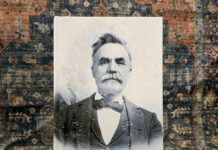By Carol Mowdy Bond
Contributing Writer
In the 1860s, the U.S. government moved the Cheyenne and Arapaho tribes into Indian Territory in today’s central Oklahoma. Pres. U.S. Grant assigned the U.S. Military to protect and support the reservation. Temporarily established in 1874 or 1875 near the Darlington Indian Agency to protect the Cheyenne and Arapaho people, Fort Reno sits on the old Cheyenne-Arapaho reservation. In July 1883, Pres. Chester Arthur officially established Fort Reno as a military reservation. Arthur took 9,493 acres from the Cheyenne-Arapaho reservation to create the fort.
The first structures, built in 1876, created a small city with quarters, stables, a commissary and other structures to support the U.S. Cavalry. The fort, home to the 9th and 10th Cavalry (Buffalo Soldiers), was named after Jesse Reno, a Mexican War and Civil War hero who was killed by a Confederate sharpshooter during the American Civil War.
Early on, the fort served a number of purposes. Historian and author John J. Dwyer said the fort “provided a bulwark against the 1875 Plains Indians uprising, helped buffer the Five Civilized Tribes from the Plains tribes’ raids, and finally helped American troopers protect Native lands from Boomer incursions.” In so doing, the fort helped keep peace among Native American groups. Of course, the Native lands were eventually opened up to Boomers and other settlers through land runs and other means.
The guardhouse/jail was built in approximately 1878. Boomer leader David Payne signed land documents in the building for the 1889 and 1892 land runs.
By the 1880s, the fort had expanded. A tree-lined parade grounds, officer residences, warehouses, barracks, and administrative buildings became part of the fort.
In 1885, one of the fort buildings served as a school and chapel. It is now known as the Ben Clark Home. Clark was one of the interpreters at the signing of the Treaty of Medicine Lodge, Kansas, in 1867. He was a longtime frontier scout who served Custer and Sheridan. As post interpreter, Clark served longer than anyone else in Fort Reno’s history. He married three Cheyenne women. All of them pre-deceased Clark. He married the third, Moka (mo-kay) in 1880. They had 12 children, and moved into the school/chapel building in 1908, making it their home. Ben, Moka, and five of their children are buried in the Fort Reno Cemetery.
A row of seven houses sits on a sloped road at Fort Reno. The historic homes are still known as Soap Suds Row. Military families resided in the homes. When the women did their laundry, the soap suds ran down the road.

Claims are that numerous soldiers carved their names inside the historic carriage house.
The U.S. Congress established the fort as a remount depot in 1908. Mules and horses were bred and trained for the U.S. Cavalry and U.S. allies. By 1930, the fort had expanded even more. The fort’s 10,000 acres included more than 100 buildings, accommodating more than 800 horses, more than 100 military personnel, and 30 civilian employees. About 1,250 acres were used to grow corn and oats, and the remainder was used for pasture. The fort’s veterinary hospital was considered one of the nation’s best.
After World War I, an active breeding program was in progress at the fort. And one of the major activities included training the U.S. Army’s accomplished polo team.
The Justice Department constructed the U.S. Southwestern Reformatory on a thousand acres of Fort Reno property in 1930. By 1963, the reformatory owned more of the land, which had been permanently transferred to the department. It is now the Federal Corrections Institution, or FCI El Reno, a federal prison.
The fort continued to supply animals for the military. But during World War II, the need for horses was diminishing, so most of the horses were sold in 1943. Nonetheless, the fort provided mules which were still used as pack animals in mountainous and remote areas.
Also during 1943, the fort transformed into a POW camp. Several hundred Germans were imprisoned there. Captured in Africa as part of Hitler’s Afrika Korps during World War II, the POWs built the European style Fort Reno chapel in 1944. Listed on the National Register of Historic Places, the beautiful chapel is now a popular wedding venue.
A switch in ownership and name occurred during the 1940s. In 1948, the U.S. Congress transferred the Fort Reno property, from the U.S. Army to the U.S. Department of Agriculture, to support agricultural research, with Oklahoma State University providing substantial leadership to the animal science, forages, and grazing research for a period of time.
The horse breeding program for war purposes was apparently terminated by 1947, although the U.S. Congress desired a continuing program for the improvement of light horse breeds. But that horse breeding program didn’t last long.
At one point, the property’s official name became the Agricultural Research Service (ARS) Grazinglands Research Laboratory. In 1970, the ARS created in-house research programs at the location. Over time, the goal broadened to include climate, water, and bioenergy research, as well as livestock, forage, and grazing systems.






